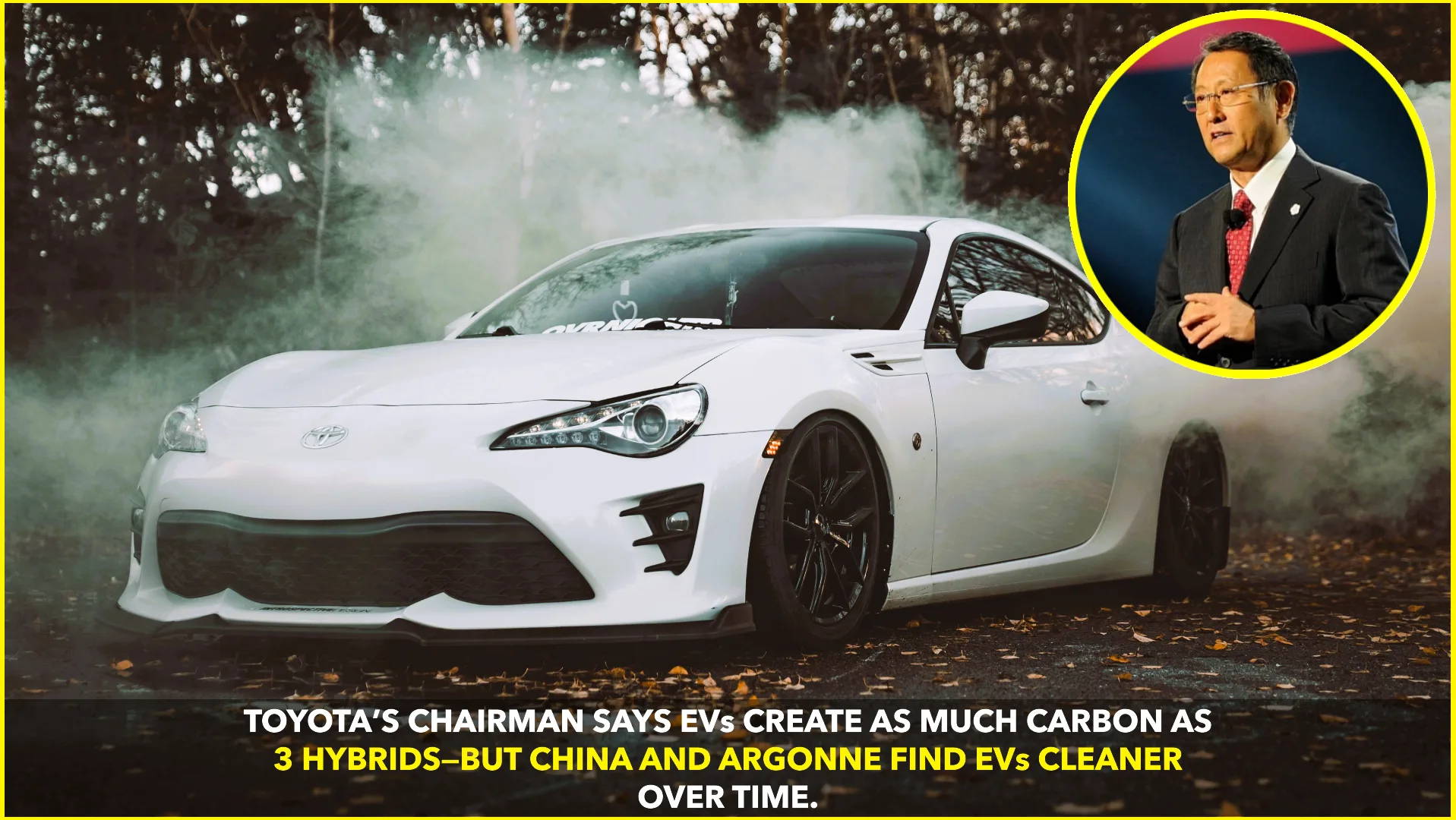Toyota Chairman’s Controversial Claim
Toyota Chairman Akio Toyoda stirred the environmental debate when he stated that producing nine million battery electric vehicles (EVs) generates as much carbon emissions as manufacturing 27 million hybrids. He explained that in Japan—where electricity still largely comes from thermal (fossil-fuel) power plants—EVs could end up increasing overall carbon output rather than reducing it InsideEVsForbes.
Toyoda’s point hinges on Japan’s reliance on fossil-fueled electricity. He contends that while hybrids offer immediate emissions reductions without depending on power grid emissions, EVs could carry higher carbon costs because of the energy used to produce and charge them.
Counterpoint from China: EVs Are Cleaner in Practice
Studies out of China from Tsinghua University and CATARC challenge this claim. Their research indicates that—even with coal-heavy electricity grids—EVs emit about 20–30% less CO₂ over their entire lifespan compared to hybrids Facebook+1.
These findings rest on lifecycle assessments that include both vehicle production and usage. Despite higher initial emissions from manufacturing, EVs in China still emerge as a cleaner choice when viewed over the long haul.
U.S.-Based Data from Argonne
Looking to the U.S., Argonne National Laboratory contributes further insight. While it’s true that EVs produce more emissions upfront—mostly from battery production—those additional emissions are typically offset within 31,000 to 45,000 km of driving Facebook.
Beyond that break-even point, EVs continue to reduce emissions compared to their gasoline-powered counterparts. As electric grids become greener and technologies evolve, this benefit is expected to grow even stronger.
Why EVs Improve Over Time
Several experts emphasize that current EVs already outperform hybrids in many situations—and that gap will only widen:
- Grid decarbonization: As more renewable energy enters the power mix, charging EVs becomes progressively cleaner.
- Battery tech advances: Improved battery efficiency, production processes, and recycling reduce manufacturing emissions.
- Lifecycle efficiency: EVs are much more energy-efficient than hybrids or combustion vehicles—some studies suggest they use up to four times less energy per distance The EquationTD Economics.
In fact, even in places with dirty grids, EVs tend to be better for the climate when viewed over their lifetime. Renewable energy and cleaner manufacturing methods are accelerating this advantage.
How These Views Stack Up
Here’s a quick comparison of the key positions:
| Source / Region | Key Finding |
|---|---|
| Toyoda / Japan | Manufacturing nine million EVs emits as much CO₂ as making 27 million hybrids, due to fossil-heavy electricity sources. |
| Tsinghua & CATARC / China | EVs emit 20–30% less CO₂ than hybrids over their lifespan, even on coal-dominant grids. |
| Argonne / U.S. | EVs’ higher production emissions are offset after ~31,000–45,000 km of driving. |
| Trend Analysis | As electricity grids get cleaner and tech improves, EVs increasingly outperform hybrids in lifecycle emissions. |
A Balanced View for Zero-Emission Transport
Akio Toyoda’s remarks are an important reminder: regional factors matter. Where electricity is carbon-intensive, EVs start at a disadvantage relative to hybrids. But the global picture—especially where clean energy grows—is far more favorable.
China’s data shows that even with heavy reliance on coal, EVs can already have lower lifetime emissions. In the U.S. and elsewhere, EVs consistently outperform combustion engines—and hybrid vehicles—after a reasonable break-even distance.
The path ahead is clear: cleaner grids and better batteries make EVs a progressively greener choice. Over time, they’re becoming the most promising technology for achieving zero-emission transport.










